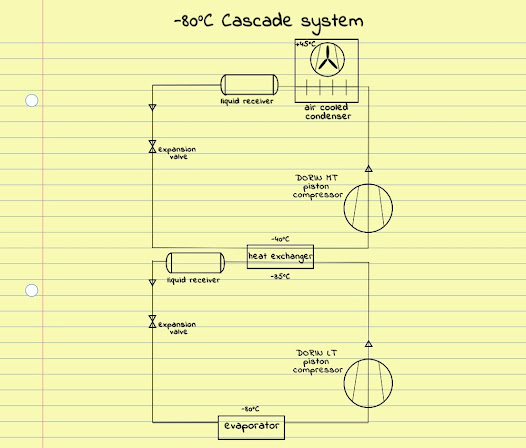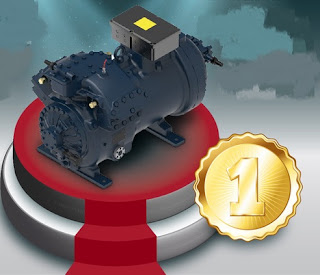CO2 trans-critical in refrigerated warehouses? Yes, indeed! -G. Pisano-
Refrigerated
warehouses are becoming more and more popular, providing the needed
back-up support for fresh and frozen food home delivery.
However, actual
F-gas regulation is imposing severe hurdles in deploying HFCs for these
applications, while end users are constantly looking for an alternative
to ammonia based refrigeration system.
CO2
trans-critical units were never coming into the picture mainly due to
the lack of large components, such as compressors: this made it
impossible to cost-effectively apply CO2 trans-critical technology to
such large duties systems.
However,
with the usual strong focus on market requests, DORIN has once again
shaped the future and recently developed and launched the largest CO2
trans-critical compressors range, with displacements up to 60 m3/h and
100 hp electric motor size.
This
made it possible to deliver up to 1.5 MW capacity
in a single rack
system, thus making it possible to cost-effectively introduce CO2
trans-critical technology into industrially sized systems, such as
refrigerated warehouses.
As an example, it is worth
to mention this existing implementation of large scale CO2
trans-critical systems.
In fact, recently one of the leading supermarket
chains decided to install this technology in its largest distribution
center: with an height up to 22m,an area of 29000 m2 is temperature
controlled, deploying about 4 MW refrigeration capacity and using only 4
CO2 trans-critical racks to reach these stunning performances.
It
is therefore clear that CO2 trans-critical technology is now fully
capable to fulfill large system duties with the needed
cost-effectiveness, providing an excellent alternative to HFCs and
ammonia based refrigeration systems.






